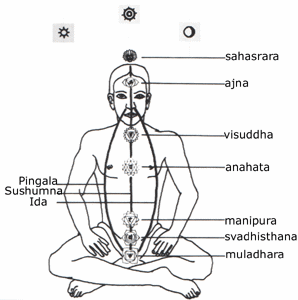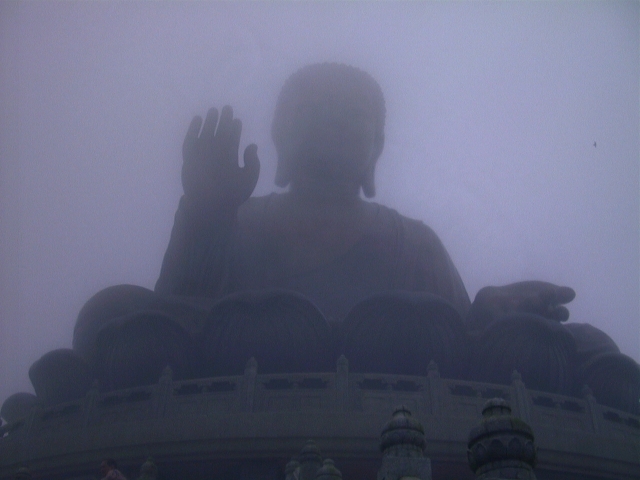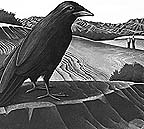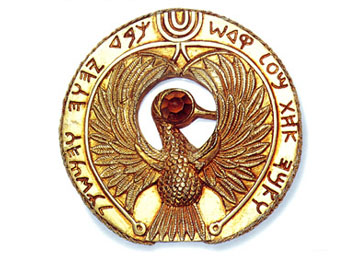
In the
Yoga Sutras of Patanjali, Chapter IV, verse 1 it is stated that the supernormal perceptual powers of Siddhis CAN be reached through the use of certain herbs, replicating on the short term a mind-strength ability and potential execution of powers similar to or equal to that of a person versed in Siddhis garnered via the highest levels of Spiritual Attainment. (see)
The texts go on to say that through the use of certain herbs it is possible for a partial or fuller Awakening to be brought about; either the Awakening of Ida or Pingala, or the Awakening of Sushumna. In Sanskrit, the method of Awakening through herbs is called Aushadhi and an Awakening thus achieved, can, under the right circumstances and conditions, albeit short term, replicate at least partially the level of a Chalabhinna, an Arhat of the third level of realization with the ability of Iddhavidha, the power of transformation.(see)
It is written as well that the herbs used to awaken this potentiality should be obtained and administered ONLY through the Guru and NOT without a Guru. The reason for such is because there are certain herbs that awaken only Ida and there are others that awaken only Pingala; and there are those that can and do suppress either or both. Aushadhi or the herbal Awakening can be a very quick, albeit risky and unreliable method. It should be done only with one who is a very reliable person, who knows the science of it's use thoroughly, and versed in the arts thereof.
In his series of eleven best selling books, Carlos Castaneda writes how he met and apprenticed under a Yaqui Indian he calls Don Juan Matus, himself trained by a Diablero, a shamam/sorcerer said to have evil powers and the ability to shape shift. Under the direct tutelage of Don Juan, Castaneda used various amounts and types of hallucinogenic herbs and medicinal plants to enlarge his vision of reality, primarily, as outlined in his first two books, a plant called Sacred Datura and of which is explored more thoroughly and more in-depth in:
CASTANEDA'S 1960s PAPER ON DATURA
As Castaneda writes about Don Juan he was never too fond of Datura, a plant he refered to as Yerba del Diablo, the "devil's weed." In the narative Don Juan claimed its power was not unlike that of a woman saying:
"She (Datura) is as powerful as the best of allies, but there is something I personally don't like about her. She distorts men. She gives them a taste of power too soon without fortifying their hearts and makes them domineering and unpredictable. She makes them weak in the middle of their great power."
In the case of states of being enhanced through medicinal plants, herbs, or drugs -- especially in the first few instances of use -- unless it is under the auspices of someone similar to the Curandera in the Velada Ceremony, the tribal elder with Sacred Datura, or an Obeahman as in the use of Branched Calalue, it is likely to be highly uncontrolled. The individual could easily find himself hurled into some far-flung region of inner space, with little chance to absorb or even notice the intervening regions. The power of the drug takes Awareness as it were, and artificially exposes it, stripping away or reducing mind created protective barriers and flings it --- Awareness --- out to an unfamiliar realm of consciousness. Without adequate preparation, the traveler can feel totally disoriented. However, under the hand of proper guidance, the space-time experience wedged open by the drug between the initial grasp of Awareness and it's ultimate closing, whether it is pinhole in size to a dam breaking, or a mili-second to an hour, it can be highly productive --- including the use and ability of Siddhis. Finally, with drugs, the open window and the touching of Awareness is of limited duration. When the power or strength of the drug wanes, the barriers to Awareness previously pushed aside rush back in, closing like a fist around a valuable pearl. It is the practiced and experienced drug master that has the knowledge and ability to mix and fine tune the proportions so the traveler can widen or lengthen how long the window is open. See also Sun Dagger as well as Obeah.
If you have had the opportunity to go through my various online offerings you will find located in a variety of places and most explicitly so in Enlightened Individuals I've Met, that I have studied under, met and interacted with many highly respected teachers and members of the Enlightenment community --- including of course, my own mentor, as well as Sri Ramana Maharshi, Franklin Merrell-Wolff, Swami Ramdas, Yasutani Hakuun Roshi, Shunyata, Alfred Pulyan, and Wei Wu Wei. Most of it has not been of my own making but somehow came about on its own. For what reason or why I cannot say as I do not know. However, meeting the teacher of Pulyan, a woman of great Attainment that I liken to a Sri Ramana only without a mountain or a following, who was fully and totally unknown and has remained so right up to this day --- in striking contrast to all of the venerables I just mentioned --- was an extraordinary experience.
Several years before my spiritual guide and Mentor sent me to the compound of Alfred Pulyan I found myself in the court of a Laotian warlord. I was requested to participate in, without many options to opt out or do otherwise, a ceremony that circled around the heavy use of opium. Dressed in local garb I layed on the floor on my side with a thin, three-foot long pipe, attended to by an ancient man that ASSISTED me through the various paces. A couple of times afterwards, on my own and with others, I partcipated in a much less formal ritual called "chasing the dragon," but instead of a pipe, using a matchbox. That was ages ago. Those days, as well as any other such youthful indiscretions, are long gone and long over. The thing is, when the effects of the opium took over, it was like I had disappeared or no longer existed, having melded into the larger whole. Yet my eyes still took in, in a very high super-clear intensity, all of my surroundings. Where or what my eyes were connected to or how they were able to work or record my environment --- and for me to still know about it I don't know --- as there did not seem to be a back of my head or even a head.
Early on I can remember engulfed and removed from everything, but still looking down and seeing my toes barely sticking out of what seemed to be a wavering silver or mercury surface spreading out before me with a shimering reflection almost mirage-like with me somehow floating without weight or body. It was warm, embracing, enticing, and euphoric.
When I first met Pulyan's Teacher that was the way it seemed to me. Warm, embracing, enticing, and euphoric --- with no back to my head and what there was of me, if there was a me, melded into the whole.
SEE:
DOING HARD TIME IN A ZEN MONASTERY
IDA, PINGALA, AND SUSHUMNA:
Of the three, Ida, Pingala, and Sushumna, Sushumna is the highest. However, in the everyday manifestation of the Samsara world, Sushumna is masked or veiled. Sometimes, under the auspices of herbs or drugs, and for the most part this is what typically happens, Ida and Pingala become or can be suppressed which inturn SEEMS to elevate Sushumna, but actually only so RELATIVELY SPEAKING. The fleeting glimpse of Sushumna is only made possible because of the suppression of the other two...which is NOT a complete Awakening.
As shown on the graphic, on either side of the spinal cord are the Ida and Pingala nadis. These correspond to the sympathetic ganglia on each side of the spinal cord. On the left of the Sushumna lies Ida nadi. To the right lies Pingala nadi. Ida derives its name from being "pale" Pingala from being "reddish." Ida represents the cool moon and Pingala represents the hot sun. The Ida and the Pingala nadis are said to correspond to the sympathetic and parasympathetic nervous systems. Ida and Pingala are also said to spiral around the Sushumna as depicted on the backqround graphic. Only the Sushumna goes from the Root Chakra to the crown center. The texts say the challange is to stabilize the flow of bio-energy in the central pathway. As long as the energy is spiraling around the Sushumna in the Ida and Pingala, the spiritual seeker is said to be driven by external forces: the forces of nature. The duality of life. Positive and Negative. Sun and moon. When the energy is channeled along the central channel the kundalini energy is said to erupt up through the Chakra to the crown center resulting in Samadhi or full Self Realization and bliss.(source)
AMRITA-NADI
Some schools of thought speak of Chakras beyond the Sushumna. There is also a concept called the "conduit of immortality" known as amrita–nadi and spoken of, for example, by the Enlightened sage Bhagavan Sri Ramana Maharshi. It is said to manifest at the time of Full Enlightenment creating a link between the ascending Sushumna and the subtle center of Hridaya, the spritual heart. See also Nirvikalpa Samadhi.
In so many words, Georg Feuerstein, author of The Shambala Encyclopedia of Yoga writes that Amrita means "nectar of immortality," referring to the nectar of immortality that trickles down from a secret center in the head and is wasted on ordinary people because its secret is not known to them. According to the Shiva-Samhita the nectar of immortality has two forms: one flows through the left conduit (Ida) and nourishes the body; the other flows along the central pathway (Sushumna), in that way the whole body is flooded, producing a superior body endowed with enormous strength and vigor and free from disease. Besides preventing aging and bestowing immortality, the powers of the nine main Siddhis as well as the eight additional ones unfold as well.
The ambrosia of the "Moon" has two "branches", from a subtle point of view: the first nourishes the body and keeps it alive, descending through the left side of the spine, resembling the River Ganges.
The other, shining as the purest milk, comes in through the right channel of the spine maintaining and refreshing the "Moon" placed on top of the Great Axe.
The "Sun" is situated in the inferior region of the spine. From this inner "Sun", placed in the area of the navel, springs a subtle channel, which leads the solar (Yang) energy up, through the force itself of these rays, in the right side of the body.
This channel on the right side is another form of the "Sun" and it goes through the entire body, uplifting the vital emanations and leading the soul to the Ultimate state of Freedom.
Shiva-Samhita
Most people, yoga adherents as well, think of the heart as being on the left side. When Mercedes De Acosta met with Sri Ramana at his ashram the Maharshi placed his right hand in the form of a fist on her right breast and said, "Here lies the Heart, the Dynamic, Spiritual Heart. It is called Hridaya and is located on the right side of the chest and is clearly visible to the inner eye of an adept on the Spiritual Path. Through meditation you can learn to find the Self in the cave of this Heart."
The main objective is to create an absolute balance of the interacting activities and processes of the physical body, mind and energy. When this balance is created, the impulses generated give a call of Awakening to the central force (Sushumna) which is responsible for the evolution of human consciousness. With any individual supression OR advancement of any one or all of the three, or anything else by herbs, absolute balance cannot be achieved.
Verse 1: janma-osadhi-mantra-tapah-samadhi-jah siddayahsamadhi.
"The power of Siddhis can come because of previous Karma and genetics (janma), from herbs (Aushadhis), the use of Mantras, the kindling of the psychic fire (tapas), and/or from Samadhi." Also translated from some sources as the following, reading the same: "The attainments are not only the fruits of the Threefold Inner Discipline, but they are congenital in some, and in others they may follow the right and intelligent use of certain medicinal herbs (see) or of certain mantras or they may follow the kindling of the psychic fire." VAYU GAMAN SIDDHI:
Using the powers of the Vayu Gaman Siddhi a person can become capable of flying in the skies and traveling from one place to another in just a few seconds. Although there are several occasions of individuals flying reported in the Sutras of classical Buddhism and Zen, the Venerable Pindola Bharadvaja is probably the person most commonly cited.
Throughout Indian, Hindu and Buddhist history, mostly through the ability of the above Siddhi, Vayu Gaman Siddhi, has brought forth many examples of flight. As previously stated, Aushadhi, the use of herbs (drugs) can, in some cases, under the right direction and in the short term, bring about the same results as a person versed in Siddhis. A modern day example of Aushadhi producing major Siddhi-like results through the use of drugs can be found in the paragraphs below. A mysterious man of spells called an Obeah, high in the mountains of Jamaica, invites the partaker to drink a warm tea-like broth with the following results:
With absolutely no effort I was able to swoop down the darkened mountain gullies and high into the air, eventually passing above Bamboo Lodge recognizable along the mountain road even in the dark because of a large empty swimming pool. Then, just barely above the treetops I picked up speed and headed toward the lighted streets and tall buildings of New Kingston. Soon I was even higher in the air over Port Royal, Although a lot of people do not know it, nor are all people particularly pleased by it or willing to accept it, by Castaneda's fourth book, Tales of Power (1974) and written in a time period circa autumn of 1971 --- ten years after his first use of psychotropic plants under the auspices of Don Juan on Monday, August 7, 1961 --- Castaneda is blatantly DENYING, and of which I am in total agreement with, the use of or need of drugs in any way, shape or form. In Tales of Power in the chapter titled: "An Appointment with Knowledge" Castaneda presents his denial based on his personal experience, in an attempt to enlighten his readers as to the need of NOT remaking the wheel, outlining the reasons for his denial:
The Yoga Sutras of Patanjali, Chapter IV, verse 1:
"That the Obeah seemed to like. Soon a cool breeze fell across my face even though it came from a direction from across the fire. The Obeahman took a vessel of water and tossed it onto the flames. A huge cloud of steam burst forth followed by a thick cloud of smoke. I jumped back and turned away, stumbling to the ground while covering my face and eyes. Then it got cold, very cold. The breeze began to blow harder and I could no longer feel the ground underneath me. It felt as though I was moving very fast, yet as far as I knew I was still on the ground by the fire. I moved my arm away from my face just barely squinting my eyes open. For an instant I was still in the billowing white smoke, then suddenly I broke through to clean, fresh air. The smoke was no longer smoke, but clouds high in the night sky. I wasn't on the ground, but hundreds of feet in the air, soaring through the night, arms along my side, wind in my face, stars over my head.

(please click)
AND NOW THIS:
Finally I managed to steer the conversation onto the topic of my interest. I began by mentioning that I had reviewed my early notes, and had realized that he had been giving me a detailed description of the sorcerers' world from the beginning of our association. In light of what he had said to me in those stages, I had begun to question the role of hallucinogenic plants.
"Why did you make me take those power plants so many times?" I asked.
He laughed and mumbled very softly, "'Cause you're dumb."
I heard him the first time but I wanted to make sure and, pretended I had not understood.
"I beg your pardon?" I asked.
"You know what I said," he replied and stood up.
He tapped me on the head as he walked by me.
"You're rather slow," he said. "And there was no other way to jolt you."
"So none of that was absolutely necessary?" I asked.
"It was in your case. There are other types of people, however, that do not seem to need them."
Again from Castaneda's fourth book, Tales of Power in the chapter titled: "The Strategy of a Sorcerer"
"The extraordinary effect that psychotropic plants had had on me was what gave me the bias that their use was the key feature of the teachings. I held on to that conviction.""It was only in the later years of my apprenticeship that I realized that the meaningful transformations and findings of sorcerers were always done in states of sober consciousness."
(source)
The following is courtesy of Sri Ramana's Western Disciples:
In 1967, Dr. Richard Alpert, a university professor who had been formally dismissed from his academic position at Harvard in 1963 for a number of so-called violations, including the mishandling of research LSD and civilian-based psychedelics, traveled to India and Nepal, a trip that ended up more in the search of and eventual touching of Spiritual Truth than anything else. During his travels he met a highly respected young white American called Bhagavan Das that was fully and deeply ingrained into the spiritual culture of India. Bhagavan Das, a follower of the venerated Indian saint Neem Karoli Baba, after becoming cognizant of Albert's spiritual quest, took him to see him. Neem Karoli Baba, following closely Alpert's struggle, dedication, and advancement along the Path, gave him the name Ram Dass, which means 'servant of God.'
After several years in India, Alpert, fully immersed as Ram Dass, returned to the United States, eventually writing the seminal book Be Here Now, published in 1971. The book, an unqualified success, became a wildly popular best seller and almost a bible in the counter-culture. The success of the Ram Dass book sent thousands of hippie-era wanderers, including for example even Apple computer genius Steve Jobs, to India in the quest for gurus and spiritual Enlightenment. It also escalated the existence of a virtually unknown Indian holy man, Neem Karoli Baba, who died in 1973, into the stratosphere, inundating him with seekers. Bhagavan Das, who Alpert followed around throughout India and Nepal like a little puppy dog, even to the point of being taken to Neem Karoli Baba, shared and took LSD and a number of psychedelics together, wrote the following in his book It's Here Now (Are You?):
"If you have a real guru, a Satguru, then you’re protected. If you don’t — if you try to go the direct route without a guide — then you don’t ingest the drug, the drug ingests you. Drugs are shakti. By definition, the guru is a person who, like Shiva can hold the shakti. You can get addicted or overdose if you’re not using drugs worshipfully. I had some very good experiences with drugs, but I don’t recommend them to others because most people in the West want the poison — they don’t want Shiva. And they don’t have elders to show them how to use poison in a sacred matter…there are many safer ways to raise your consciousness than experimenting with drugs, and most gurus in India prefer more conservative routes. Doing your meditation, japa, and hatha-yoga is a slower path, but the effects are more lasting, and you run less risk of frying your nervous system. Without a doubt, self-discipline pays for itself in the end."

Fundamentally, our experience as experienced is not different from the Zen master's. Where
we differ is that we place a fog, a particular kind of conceptual overlay onto that experience
and then make an emotional investment in that overlay, taking it to be "real" in and of itself.

|
 |
THE BEST OF CARLOS CASTANEDA |
| <<< PREV ---- LIST ---- NEXT >>> | |

POWER OF THE SHAMAN: WHERE DOES IT COME FROM, HOW DOES IT WORK?
DEATH HAD A FACE: The Specter of Death In Shamanism and Zen

CONTRIBUTING:
THE WANDERLING
In the Seventeenth Discourse of the Gita, Krishna explains the Threefold Mortification (ascetic discipline) of Body, Speech and Mind, which, if practised daily, would transform these avenues of action and make one a superior person from the spiritual point of view: The above three morphed over time to become the three major disciplines found in Buddhism and Zen, namely Meditation (meditative concentration), Morality (moral purity), and Wisdom (enlightened insight):
IDDHIVIDHA - THE POWER OF TRANSFORMATION.
The Buddha said "If a monk should frame a wish as follows: "Let me exercise the various magical powers, let me being one become multiform., let me being multiform become one, let me become visible, become invisible, go without hindrance through walls, ramparts or mountains as if through air, let me rise and sink in the ground as if in the water, let me walk on the water as if on unyielding ground, let me travel through the air like a winged bird, let me touch and feel with my hand the moon and the sun mighty and powerful though they are, and let me go without my body even up to the Brahma world," then he MUST be perfect in the precepts of Sila, bring his thoughts to a state of quiescence through Samadhi, practice diligently the trances of Jhana, attain to insight of Prajna and be frequenter to lonely places."(source)